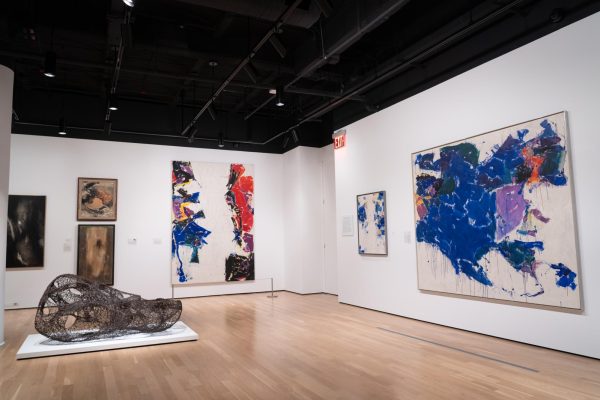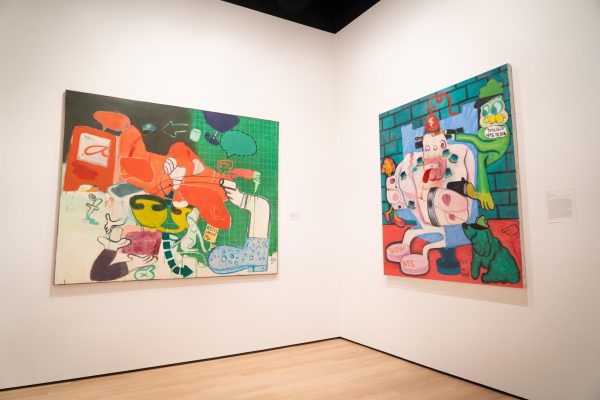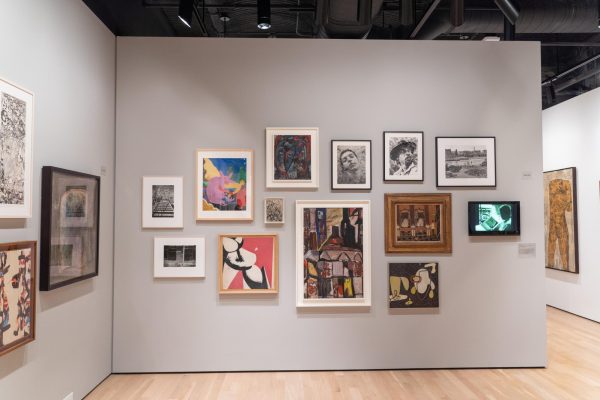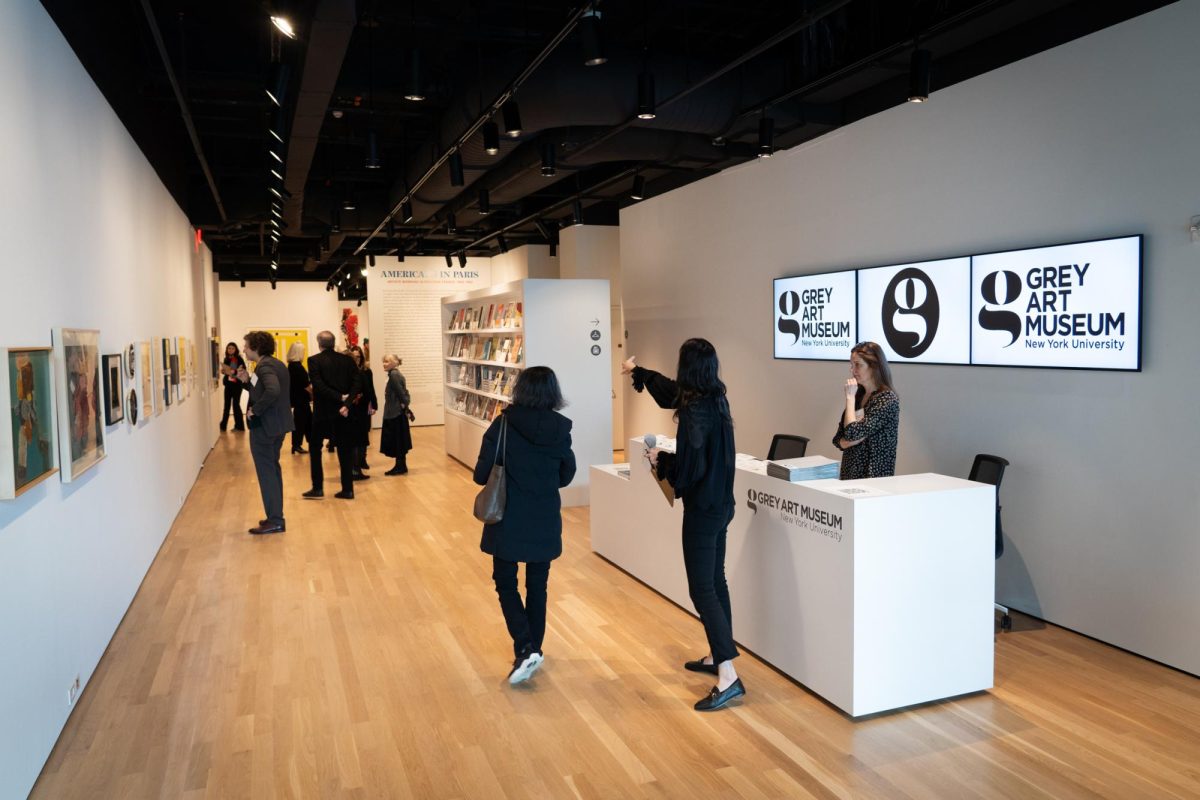There’s a new purple banner flying in the East Village, marking NYU’s recently relocated Grey Art Museum. The museum, formerly the Grey Art Gallery and located on Washington Square East, has rebranded and moved to 18 Cooper Square. The inaugural exhibition in the new space, “Americans in Paris: Artists Working in Postwar France, 1946-1962” opened to the public on March 2.
The Grey Art Museum now functions as NYU’s fine arts museum, housing the university’s vast collection of thousands of artworks. These works were primarily donated by the museum’s founder, Abby Weed Grey, and collectors James Cottrell and Joseph Lovett. A recent donation by Cottrell and Lovett is partially behind the museum’s large expansion.
“Our mandate was to create more space,” said Lynn Gumpert, the director of the museum, during a press preview. “Elegant. Simple. Let the work speak.”
The new space, which design firm Ennead Architects has been working on since 2020, is over 17,000 square feet and was built to expand the size and research capabilities. In around a year, the museum will open the Cottrell-Lovett Study Center, allowing more direct access to the university’s art holdings to students, faculty and researchers, according to Gumpert.
“Americans in Paris” features around 130 works of art from 70 artists residing in France after World War II. The show was curated by scholar Debra Bricker Balken and Gumpert, with the purpose of highlighting the robust art scene of postwar France, made particularly exciting by an influx of American artists. The exhibition focuses on the prominent styles among these artists and although it covers a lot of ground, the separated sections made the exhibition digestible.
The “‘Hot’ Abstraction” component of the show features Sam Francis’ “Blue Out of White,” a work that features blue and purple paint running down a white canvas. Francis was one of the many Americans who experimented with abstract techniques while abroad in postwar France.

The curators juxtaposed the impulses of many artists by including a section called “The Persistence of Figuration,” which included works by artists who chose to play with the human form rather than lose it to abstraction.
A satirical painting by Peter Saul titled “Man in Electric Chair” showed a disfigured man — who looked more like a flesh-colored blob than anything else — in a cobalt blue chair with a red lightning bolt cap on his head. A green man, seemingly a prison guard with gigantic yellow teeth, climbs on his side with a painted speech bubble reading “this guy has to die.” Through these contrasts, the work displays different artistic approaches in this specific and important era of art history.

Another section, titled “Salon,” is aimed to emulate Paris salons. The salon in this exhibition is laid out in the typical, nondescript style, with many artworks hung closely together in uneven rows. This section features works by both French and American artists who lived in Paris for at least a year. Visually, “Salon” reflects the art that would have been in the French postwar salons.

“Americans in Paris” was the right decision for an inaugural exhibition. The gallery features big names in art such as Ellsworth Kelly, and is the first exploration of the robust American arts scene in France during this time period.
The expansion of Grey makes NYU, as an institution, more competitive among the many fine arts institutions in New York. Although the university has had an impressive collection for decades, the former space on Washington Square East felt less inviting, sandwiched between the two entrances of the Silver Center and often obstructed by scaffolding. It was previously a struggle to get students to visit the gallery, Gumpert said.
“The fact that we have a bigger street presence and that we have a bigger space will hopefully encourage more students to come in,” Gumpert told WSN. “Part of our raison d’être is to really get students comfortable visiting museums.”
The newly opened Grey Art Museum is a great resource for students, whether it is to learn more about art history, or just to spend time roaming around a gallery that is right on campus. Students, faculty and staff all enter for free.
“Americans in Paris: Artists Working in Postwar France, 1946-1962” is open until July 20.
Contact Alexa Donovan at [email protected].


























































































































































